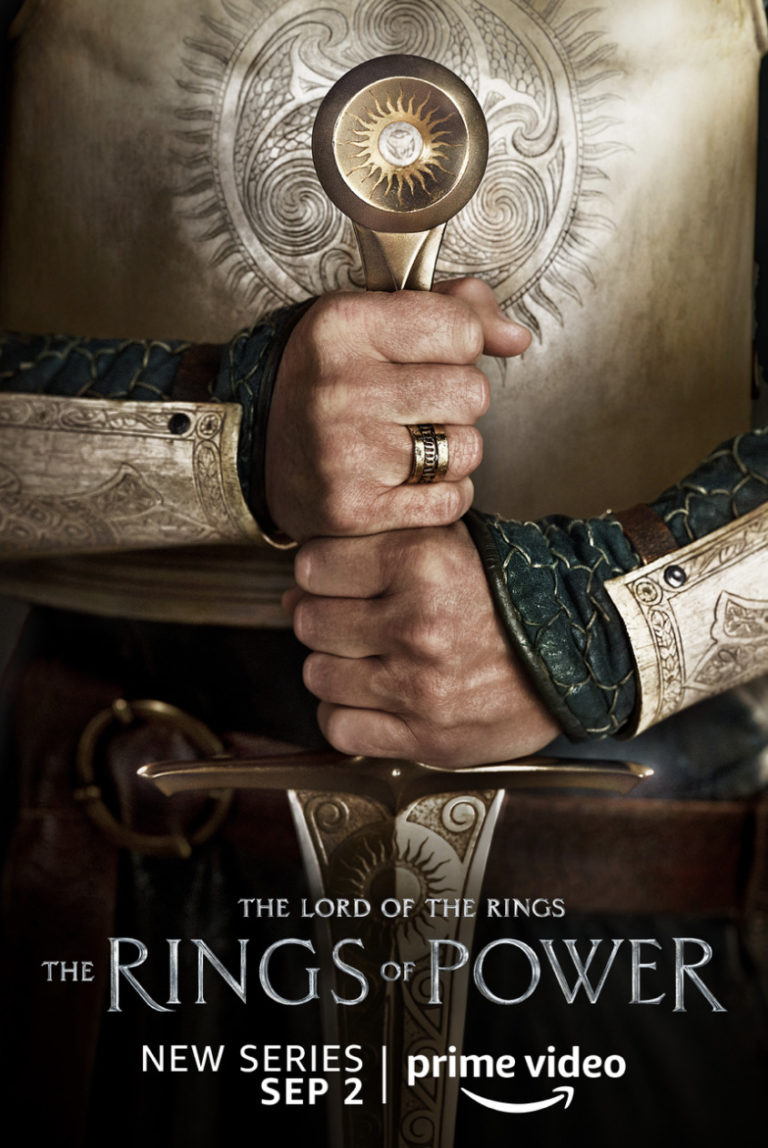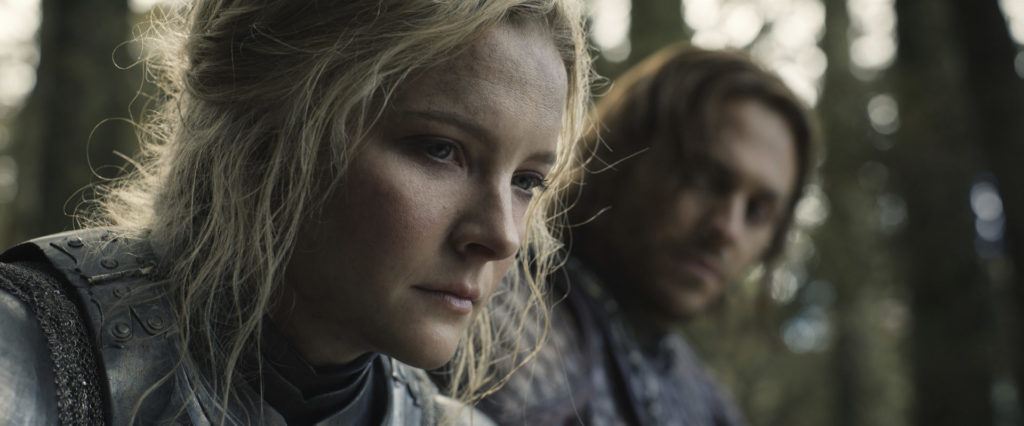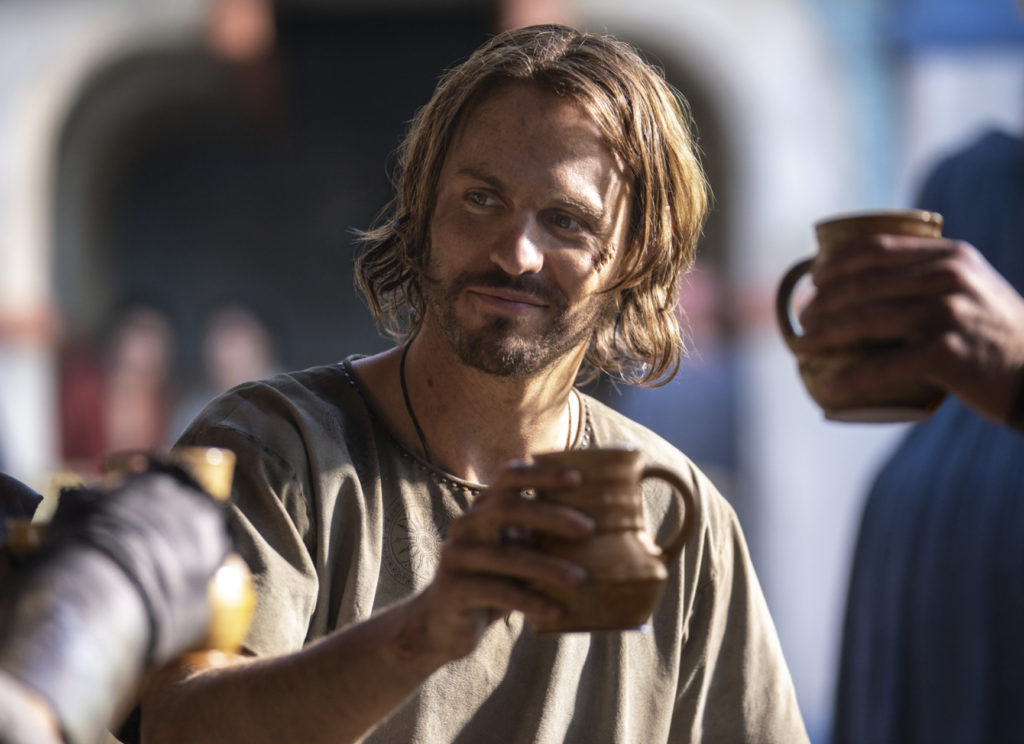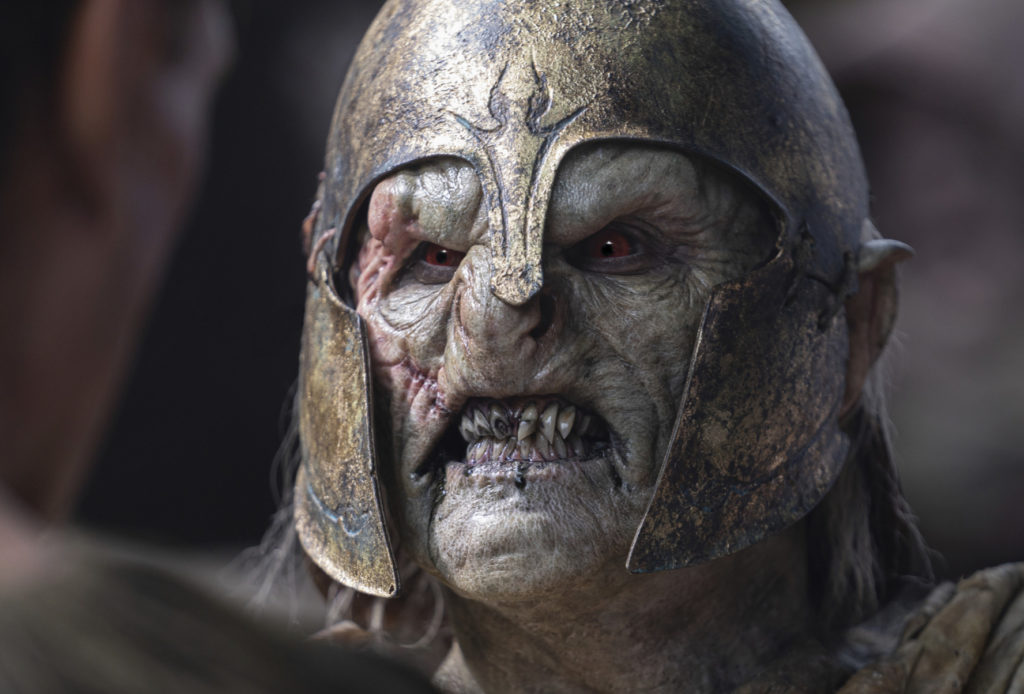
Some of the most engaging, satisfying origin stories are those that showcase how history often repeats itself in cycles, especially when they mirror conflicts involving the same or similar locations, people and conflicts. Amazon Studios proves that idea with its stunning eight-episode first season of a five season production commitment for its new prequel television series, The Lord of the Rings: The Rings of Power.
The fantasy drama delves into the history of the titular ring, including how it was made, and the races that it affects in Middle-earth. Based on the The Lord of the Rings novel and its appendices by J. R. R. Tolkien, the show is set in the Second Age of Middle-earth, thousands of years before The Lord of the Rings and another one of its prequel series, The Hobbit.
The Lord of the Rings: The Rings of Power was developed by showrunners J. D. Payne and Patrick McKay for Prime Video. The duo also served as executive producers on the series’ first season, alongside sci-fi fantasy genre veteran, J. A. Bayona, who also directed the initial two episodes.

Beginning in a time of relative peace, The Lord of the Rings: The Rings of Power follows an ensemble cast of characters as they confront the long-feared re-emergence of evil to Middle-earth. The series brings to screen for the first time the heroic legends of the fabled Second Age of Middle-earth’s history. The epic drama is set during a time in which great powers were forged, kingdoms rose to glory and fell to ruin, and unlikely heroes were tested.
The show follows an ensemble cast of characters, both familiar and new, as they confront the long-feared re-emergence of evil to Middle-earth. From the darkest depths of the Misty Mountains, to the majestic forests of the elf-capital of Lindon, the breathtaking island kingdom of Númenor before its collapse and the farthest reaches of the map, the kingdoms and characters will carve out legacies that live on long after they are gone.
The series’ first two episodes, which were written by McKay, Payne and Gennifer Hutchison and directed by Bayona, compellingly introduce the season’s main characters. The episodes’ stories perfectly balance the wars, politics and normal, day-to-day life of the ensemble group of protagonists.
The main characters include the elves, who are led by Galadriel (Morfydd Clark), a warrior who leads the belief that evil is returning to Middle-earth, and will do whatever it takes to protect it. She’s also joined in the fight by Galadriel, High King Gil-galad (Benjamin Walker) and Elrond (Robert Aramayo, who plays the character in a much more amiable, gentle way than Hugo Weaving’s more mature portrayal of the role in The Lord of the Rings and The Hobbit films).

Meanwhile, Nori (Markella Kavenagh) is a restless Harfoot (a breed of Hobbit) who dreams of exploring the world beyond her campground. Dwarf prince Durin IV (Owain Arthur) and his wife Disa (Sophia Nomvete), as well as star-crossed lovers, human Bronwyn (Nazanin Boniadi) and loyal elf Arondir (Ismael Cruz Córdova), also join the fight to protect their home land. Eventually, iconic Lord of the Rings characters Elendil (Lloyd Owens) and Isildur (Maxim Baldry), the father and son whose demises lead to The One Ring’s survival, join the fight from Númenor.
Besides the captivatingly emotional character arcs that are bolstered by the ensemble cast’s dynamic performances, The Lord of the Rings: The Rings of Power features dazzling production value that truly highlights the astounding setting of Middle-earth.
Throughout the season, Oscar Faura, Aaron Morton and Alex Disenhof’s graceful cinematography beautifully captures the brilliant colors and depths of Ramsey Avery and Rick Heinrichs’ unique production design of each area of Middle-earth. Combined with Kate Hawley’s costume design that reflects the personalities of each of the franchise’s races and stunt coordinator Glenn Suter’s intricate action sequences that highlight the characters’ fighting styles, The Rings of Power captivatingly expands the Lords of the Rings‘ visual lore.

The new television adaptation proves it has a reverence and affection for the considerable mythology behind the legendary Lords of the Rings franchise. While also taking some liberties to deviate somewhat from its source material to create a more cohesive story, The Rings of Power is a stellar origin story for the franchise. Impressively balancing the conflicts and everyday lives of the diverse group of characters, whose emotional stories are told with the aid of magnificent visuals, the new show is a powerful prequel that adds depth to the franchise.
The first two episodes of The Lord of the Rings: The Rings of Power‘s first season are now streaming on Prime Video. The season’s remaining six episodes will premiere weekly until October 14.
Grade: A

